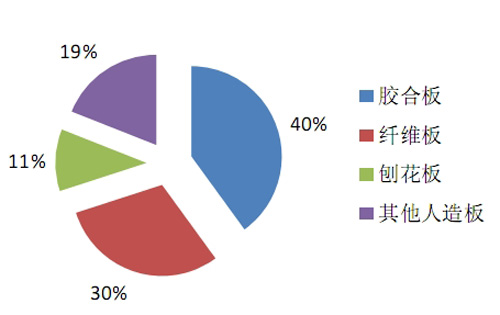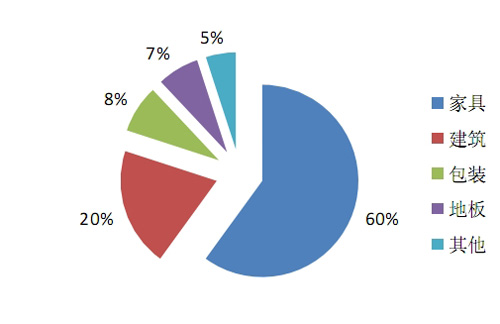Second, the development of China's furniture market in 2010
The furniture industry is one of China's fast-growing industries, although the international financial crisis has had a certain impact on the industry. However, the overall trend remains positive. The following is an analysis of the development of the Chinese furniture market in 2010.
(1) Development environment
1. International environment
Internationally, China has joined the World Trade Organization (WTO), and the tariff reduction for furniture has fallen to 18%. This provides a more favorable market opportunity for the international furniture industry. This change in the furniture industry is increasingly focused on the market and circulation and its organizational level, and a new market and circulation revolution is coming. At the same time, ASEAN countries are competing for China's middle and low-end furniture market share, while European and American countries are grabbing China's high-end furniture market share. There are also more and more international obstacles. Such as anti-dumping on Chinese furniture. More representative ones: In July 2003, when there were more than 20 American furniture manufacturers, a special alliance, the American Furniture Manufacturers Union, sent messages through the media saying that they would In the fall of that year, the US International Trade Commission and the US Department of Commerce proposed an anti-dumping lawsuit against wooden furniture imported from China. As a result, the United States has imposed anti-dumping on wooden bedroom furniture imported from China. All along, the main market for China's furniture exports is developed countries and regions such as Europe and the United States. However, under the impact of the financial crisis, the European and American markets have been sluggish.
2. Domestic environment
As a large consumer goods of the people, with the rapid improvement of people's living standards and the rapid development of housing construction, the market capacity is huge, and the average profit rate of the industry is much higher than the average profit rate of the society. Therefore, the furniture industry is the capital investment and scale in various industries. The most prominent one is expanded. After nearly 15 years of rapid development, China's furniture industry has been comprehensively improved in production, sales, technology level, product quality and economic benefits, realizing the transition from traditional manual to modern industry; production and export have developed rapidly; Clusters and characteristic areas are gradually formed; raw materials are diversified; and coordinated development of related industries is promoted. On the other hand, technological advances are changing with each passing day, product demand is changing day by day, and market competition is becoming increasingly fierce. These forces companies to seek manufacturing methods and production methods that can respond quickly to the market and adapt to the contemporary environment.
(II) Development status
1. Market size and growth
The scale and output value of China's furniture industry have been growing steadily. In 2010, China's furniture industry gradually stepped out of the financial crisis, and production, sales and exports all showed rapid growth. According to statistics, in 2010, the output of the furniture industry was 770.238 million pieces, and the total industrial output value reached 966.7 billion, an increase of about 32% over 2009. At present, the furniture manufacturing industry has become the fourth largest industry after the national economy relays food, clothing, home appliances and furniture.

Figure 2.1 Gross Output Value of China's Furniture Industry (2006-2010) Source: China Light Industry Information Center
In terms of import and export, as the world's largest furniture exporting country, last year's furniture production value in China not only maintained growth, but also the export value of foreign sales ranked first in the world. In 2010, China's furniture exports reached US$33.7 billion, accounting for 25% of the world's total furniture output, and the export growth rate reached an unprecedented 30%. Mainly exported to the United States, the European Union and ASEAN, of which ASEAN exports have increased significantly.

Figure 2.2 Total China Furniture Exports (2006-2010) Source: China Light Industry Information Center
As the world's largest furniture producer and exporter, the Chinese furniture market's foreign trade exports have exceeded US$25 billion for several consecutive years. However, since the economic crisis in 2009 caused Chinese furniture exports to suffer setbacks, many export-oriented furniture companies began to turn to domestic sales to seek a breakthrough. According to the statistics of the China Furniture Association, the domestic sales of furniture in China has maintained a growth rate of more than 15% for many years, and annual sales exceeded 400 billion yuan. Among them, in 2010, more than 30% of civilian furniture manufacturers switched from exporting only to domestic and foreign sales, and opened the domestic market through various channels. In 2010, a large number of “Haiguipai†furniture teams that were exported to China for domestic sales also made their way to the domestic market with the help of domestic exhibitions.
2. Market segment structure
In the statistical classification, the furniture industry is divided into five categories: wooden furniture, metal furniture, plastic furniture, bamboo and rattan furniture and other furniture. In the production category, it is divided into wooden furniture, metal furniture and upholstered furniture. At present, China's furniture industry produces wood furniture, followed by metal furniture; in recent years, the proportion of wood furniture has declined slightly. According to statistics in 2010, the output value of wooden furniture manufacturing in China's furniture industry accounted for 58%, and metal furniture manufacturing accounted for 24%. In the past four years, the proportion of structural changes of different types of products has not been large, but the proportion of wooden furniture has declined slightly. In comparison, the output of metal furniture has entered a relatively stable period, and the proportion of the proportion has gradually increased.

Figure 2.3 Distribution of output value of the furniture industry (2010) Source: China Light Industry Information Center
In terms of sales value structure, in 2010, wooden furniture accounted for 58%, while metal furniture accounted for 24%; other types of furniture sales increased. In 2010, among domestic furniture enterprises above designated size, domestic sales of wooden furniture accounted for the largest proportion, accounting for 77.4%; while plastic furniture exports were the most dependent, with 35%. Metal furniture exports accounted for 34.2%.

Figure 2.4 Distribution of sales value of the furniture industry (2010)
(1) wooden furniture
China's wooden furniture is divided into plates and can be divided into solid wood furniture and panel furniture. Solid wood furniture is divided into wood and can be divided into hardwood and softwood. The simpler method is to press the surface of the wood with nails. The softwood can be left behind, and the hardwood can not be left. It is generally believed that hardwood furniture with dense materials and deep colors can be called high-grade furniture. Nearly 80% of furniture products are made of wood furniture. In recent years, the demand for wooden furniture has gradually increased from the emphasis on appearance to the level of material. More new products are based on original design and high-quality raw materials. From ancient natural materials, it always gives people a clean, fresh and comfortable feeling. Therefore, whether it is wooden furniture or carved wooden ornaments, it is always favored by many consumers. In recent years, China's wooden furniture manufacturing industry has developed rapidly. From January to November 2008, the total industrial output value of all wood furniture industry in China reached 144,327,224.00 thousand yuan, an increase of 24.38% over the same period of the previous year; the accumulated main business income was 139,615,122.00 thousand yuan, an increase of 25.29% over the same period of the previous year; The total profit was 5,074,241.00 thousand, an increase of 22.54% over the same period of the previous year. From January to November 2009, China's wooden furniture industry achieved a main business income of 170,625,503.00 thousand yuan, an increase of 14.74% over the same period of the previous year; the total profit reached 6,854,944.00 thousand yuan, an increase of 22.57% over the same period of the previous year. From January to November 2010, the total sales revenue of wooden furniture manufacturing reached 221.059 billion yuan, a year-on-year increase of 31.86%, higher than the industrial average (31.78%). Industry sales are growing at a faster rate. With the increase of income of Chinese residents, the accelerated expansion of housing construction area, the expansion of hotel and office building area, and the awareness of furniture brands, China's furniture demand has entered a new stage. The domestic demand potential is huge, and it accounts for the largest proportion of the furniture market. The wooden furniture will also usher in a new round of development opportunities.
plate-type furniture
Panel furniture, that is, wood-based panel furniture, refers to the disassembly and assembly furniture with the wood-based panel as the main substrate and the panel as the basic structure. Compared with solid wood and mahogany furniture, because the plate breaks the original physical structure of the wood, when the humidity changes greatly, the deformation of the artificial board is much smaller than that of the solid wood, and it is more suitable for the fast-paced modern society. At the same time, the artificial board is basically used for the corners of the wood, which invisibly protects the limited natural resources. The panel furniture has become a new family in the furniture category with its novel style, bright colors, clear wood grain and no deformation, no cracking, anti-mite and moderate price. Wood-based panel products are divided into: plywood, fiberboard, particleboard and other wood-based panels. In the production of wood-based panels, 60% is used in furniture production. Therefore, furniture production is the main driving force for the production of wood-based panels.

Figure 2.5 Proportion of China's wood-based panel products in 2010 Source: China Forest Products Industry Association

Figure 2.6 Distribution of wood-based panel production in China in 2010 Source: China Forest Products Industry Association
After 50 years of development and exploration, the manufacturing equipment, application hardware and production technology of panel furniture have been comprehensively improved, creating unlimited space and technical support for the future development of the panel furniture industry. There are nearly 10,000 wood-based panel enterprises in China, with a output of more than 130 million cubic meters and an output value of more than 200 billion yuan. It is the world's largest producer of wood-based panel production, consumption and import and export trade. In 2010, the output reached 140 million cubic meters. However, at present, China's panel furniture is still in the post-crisis era, and the future development of the industry cannot continue to maintain profiteering development and will enter a stage of further development. At this stage, Chinese panel furniture will exhibit the following development characteristics:
Bamboo Card,Bamboo Business Cards,Wood Business Cards,Environmental Business Card
Sichuan Shihai Import And Export Trade Co.Ltd , https://www.zgshzm.com